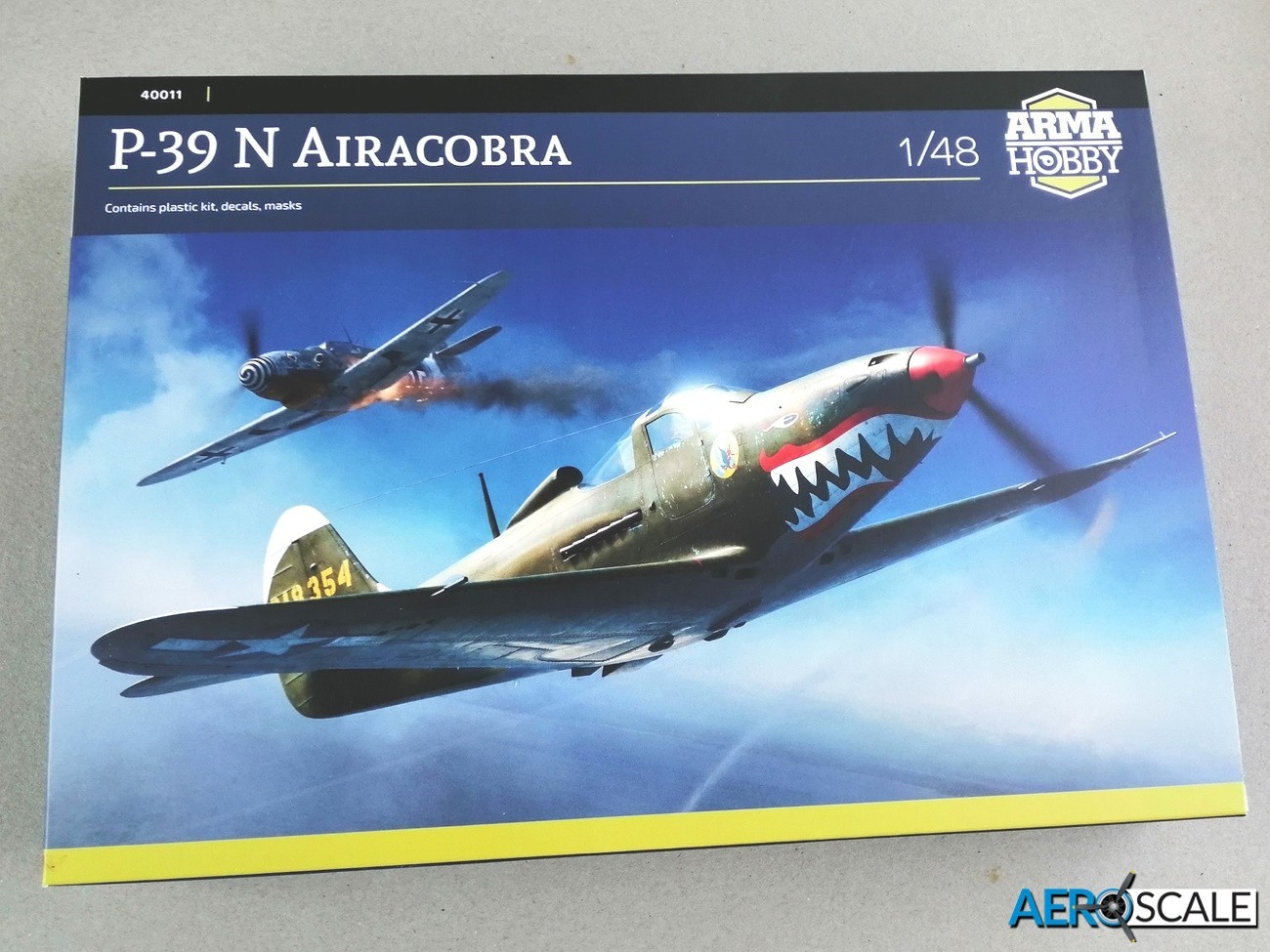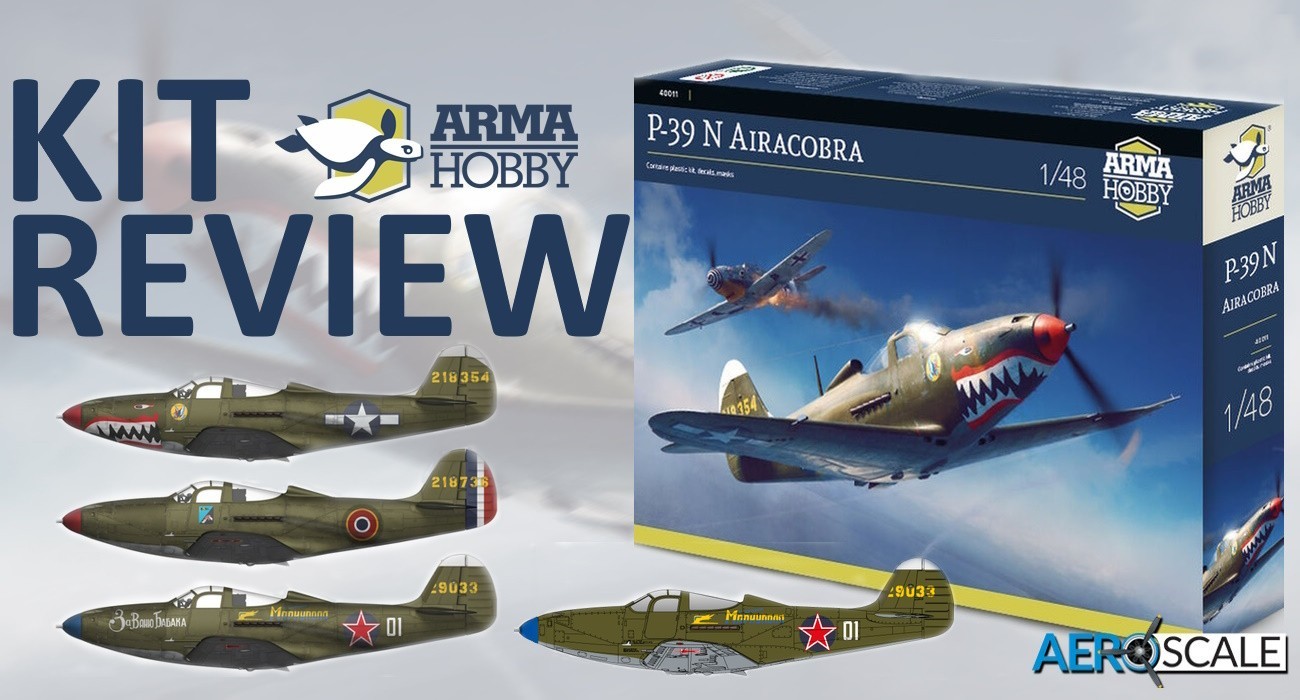
Background
The Airacobra was Bell’s answer to the US Army Air Corps [USAAC] Circular proposal X-609 for a fighter capable of intercepting high altitude hostile aircraft. Bell’s chief engineer set about designing the aircraft around the 37mm Oldsmobile T9 [later M4] canon. As the calibre of the canon was much greater than the standard 20mm canon, it was impossible to accommodate the engine in the forward fuselage. As a result, the engine was placed in the centre of the fuselage behind the pilot with the turbo charger placed in the belly. The air intake for the super charger was placed on the side of the fuselage similar to the intakes on the tail boom of the P-38. A ten-foot-long prop shaft connected the Allison V-1710 liquid-cooled V-12 engine to the propeller. The resulting XP-39 was submitted to the National Advisory Committee for Aeronautics [NACA] for tests. Unfortunately, it was found that there was high amount of drag resulting from the engine installation, oil cooler and intercooler scoops as well as the turbocharger. Changes were made from the recommendations of NACA including the deleting of the turbocharger. Its removal had a noticeable negative effect regarding high altitude performance. The glycol-cooled radiator was fitted in the wing centre section, immediately beneath the engine; it was flanked by the drum-shaped oil coolers. Air for the radiator and oil coolers was drawn in through intakes in wing leading edges and was directed via four ducts to the radiator faces. The air was then exhausted through three controllable hinged flaps in the fuselage centre section. Air for the carburettor was drawn in through a raised oval intake immediately aft of the rear canopy. Despite the change in aerodynamics the P-39 never attended speeds beyond 400mph. The lack of free space in the fuselage meant internal fuel storage was limited to the wing. As a result, range was disappointing and the P-39 generally flew on missions with external fuel tanks. Despite its limitations the P-39 saw service throughout WWII with the USAAF, Soviet AF, Free French, the RAF, and the Italian Co-Belligerent AF.
The P-39N as is represented with this edition along with the P-39Q were substantially superior to the previous models. It was powered by the Allison V-1710 the only US domestically liquid cooled engine. The P-39N had a few subvariants over its short production life including photo reconnaissance aircraft.
The Kit
This new 1:48 scale new tool plastic injection edition of the P-39 Airacobra comes in a side opening box with the contents placed in a separate sturdy tray. There is 3D parts included and theses are bagged separately
The kit contains:
- 85 x plastic parts,
- 6 x clear parts
- 4 x 3D printed parts
- 3 x ball bearings [ballast]
- Kabuki paint masks
- Decal sheet [Techmod]
- Instructions
- Errata sheet
It’s clear on first inspection that Arma Hobby continues the high quality of moulded detail, both recessed and raised. The consistency of the panel lines is excellent, with a few fasteners adding extra detail. There were signs of shrinkage on the surface of the upper wing on the first edition [P-39Q]. It is evident that Arma Hobby has made a great effort to address the shrinkage on the second release of the P-39. More on this later.
Twenty-two nicely detailed parts make up the cockpit. With a clear part included for the gun sight. Arma Hobby make a great effort to get as much detail on the plastic as possible without relying on photoetched detail. The cockpit and front undercarriage bay form an integral unit. They are built up before joining the fuselage halves. Step one of construction involves folding the plastic gun breeches 90° from the mounting and cartridge collector bags. Where the fold is made the plastic is somewhat thinner, making it a simple task. The floor of the cockpit has the prop shaft moulded onto it, and there is an additional prop shaft casing to attach to the floor. The instrument panel is split into two parts, with light raised detail. This allows the decals instruments faces to settle much more easily. The seat looks a bit plain and the decal sheet includes seat belts. I would suggest if you have access to a 3D printer using the QR code to produce a printed seat that includes harnesses. Other detailed parts for the cockpit include seat frame, armour, headrest, left hand side console, rudder pedals, control stick, two-part gunsight, rear decking, and radio equipment. The two sides of the front undercarriage bay attach to the floor of the cockpit. There is a separate roof onto which go the three-ball bearing ballast.
The transparent plastic parts are crystal clear. The crystal-clear parts include the canopy and windscreen which are moulded together. The clear plastic doors are separate and can be fitted open or closed. Detail moulded on the inside of the doors is very good. Decals are included for further detailing the inside of the doors. Paint masks are included for inside and outside of the door windows. Only the right-side door had handles on both side and was the one used for entry and exit. The left-hand door could be opened only from the outside and was for emergency use. Also included on the clear plastic sprue are two types of gunsight and the landing light.
The fuselage has excellent recessed and raised detail. There are tabs attached to the fuselage halves to aid their joining. Three sets of spinners are included to cover the various canon options of the Airacobra. The prop used for this edition is made up from three parts including the canon barrel fitted in the centre of the spinner. Arma Hobby has included a couple of 3D printed air vents to replace the incorrectly moulded air intakes just behind the spinner. The errata sheet that the 3D printed parts are attached to explains the process of removing the moulded parts and the fitting of the 3D parts. The fairing for the nose mounted guns is separate. There are several access panels that need to be removed around the nose, the instructions provide full details. Two sets of exhaust for the Allison V-1710 engine are supplied, only one set is used. The three flaps under the engine for the glycol radiator and oil coolers are separate and look as if you can model them open or closed. Moving over to the tail the vertical fin is separate and made up from two parts with a separate two-part rudder.
Both upper and lower wing halves are full span with elevators and flaps moulded in. As with the fuselage the moulded detail is superb. In the first edition of the Airacobra [P-39Q] there were visible sink marks on the upper wing surface. Arma Hobby has rectified this by redesigning the shape of the channels of the mould, resulting in an improvement of the flow of plastic. Although there is a still a hint of shrinkage, it is an improvement in the appearance of the upper wing of the P-39N. There is some fine detail in the roof of the main undercarriage bay. Pay attention to the instruction as the moulded ID lights under the right wing need to be filled and sanded. There are holes in the leading edge for the additional machine guns.
The horizontal tail unit is made up from three parts with the upper part being one piece. The elevators are one piece.
The distinctive look of the undercarriage is a well-designed feature of this kit. The complex looking front undercarriage leg look very good and is made up from four parts. The attachment points into the fuselage look positive. The actuator arm needs to be gently bent to achieve the right shape. It’s very easy to do and the angle can be correctly set using the separate piston as a guide. The front undercarriage legs are designed to be installed at the end of the build. The one-piece main gear legs are a much simpler affair. The detail on the undercarriage doors is excellent. Wheels are all two-part with the main wheels having a weighted look. The manufactures name [Firestone] is visible on the main wheels.
There is a separate mount that is fitted under the belly for the bomb or fuel tank. Both are supplied in the kit.
Kabuki style paint masks are included for the canopy, windscreen and wheels. There are masks for both sides of the doors as well as the underwing landing light.
Marking options include:
- P-39N Airacobra 42-18736. Cdt. Jean Machet de la Martinière, GC 1/4 Navarre commander. Reghaia airbase, Algeria, March 1944.
- P-39N Airacobra 42-18354. 345th Fighter Squadron, Sardinia-Corsica, spring 1944.
- P-39N Airacobra 42-9033 ‘White 01’ 100th Guards Fighter Regiment, pilots: Ivan Babak and Grigoriy Dol’nikov, 1943-1945 (two variants).
All three options are olive drab upper and neutral grey lower surfaces. Option one of the USAAF operating from Sardina and Corsica features the obligatory shark’s teeth on the nose. Option two is a French Air Foce Airacobra based in Algeria. There are two Soviet Union version for option three. The first flown by Ukrainian pilot Grigory Dolnikov with the inscription “from the students of Mariupol” with the silhouette of Nike. Additionally on the nose is the inscription “For Vanya Babak”. The bonus marking option features the original markings of 42-9033 flown by Ukrainian pilot Ivan Babak again featuring the inscription “from the students of Mariupol” with the silhouette of Nike. This version lacks the inscription dedicated to Ivan Babak. It is worth noting on option three that there are two versions of the Soviet star on the upper and lower wing.
The Techmod produced decals look excellent. Print quality is superb with excellent colour density, definition and registry. This can be clearly seen with the stencils as each one is legible.
Arma Hobby provide a QR code in the instructions so you can access the free 3D files. The files allow you to create 3D printed upgrades that include seats with harness, gun butts as well as trim wheel and the lever for the oil cooler shutter. These are available under license for customers buying the kit. So, if you have access to a 3D printer, it is well worth creating seats to replace the kits seat
The twelve-page A4 format instructions are bilingual: Polish and English. If you want an authentic look to your finished model, make sure you follow the instruction. There are no minor modifications needed for any of the marking options. Three of the marking options have four view illustrations, the bonus marking option has just side profiles. There is a separate black line illustrations for the application of the stencils. There are several paint manufactures referenced in the instructions including: Hataka, AK RC, Lifecolor, Ammo, Humbrol, Vallejo and Tamiya. FS numbers are provided for all the colours.
Conclusions
Arma Hobby has made a great effort at addressing the shrinkage that was evident on the upper wing of the P-39Q. The look of the upper wing of the P-39N is a significant improvement. To be fair the shrinkage was not a deal breaker, but the fix certainly heaps great credit on Arma Hobby’s pursuit of a quality product. The P-39N looks quite superb, Arma Hobby have reproduced the sleek lines of the Airacobra. Surface detail is very well done and the choice of markings reflect the widespread use of this fighter. Highly recommended.
Our thanks to Arma Hobby for this review sample. This edition is now available from Arma Hobby
40011 – Bell P-39N Airacobra – 1:48
Please remember, when contacting retailers or manufacturers, to mention that you saw their products highlighted here – on Aeroscale.

